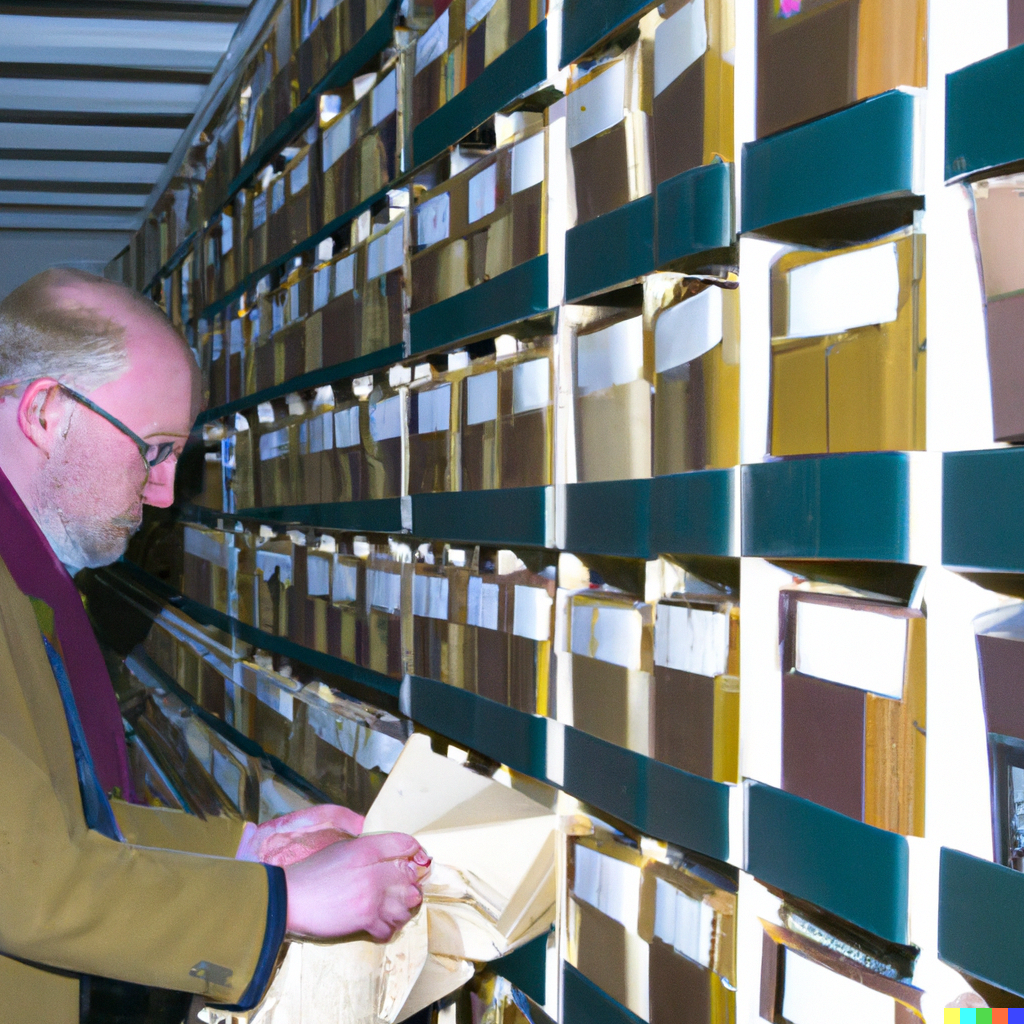E-Government and Digitalization

Artificial intelligence in the public sector: the search for a balance between efficiency and safeguards
Eva Maria Menéndez Sebastián | 26 April 2023 | Issue 2/2023
Public administration is immersed in a major technological disruption that raises interesting questions and legal debates. The use of artificial intelligence is undoubtedly one of them. However, this phenomenon must be analysed in the context of the general transformation that the public sector is undergoing, the so-called “public governance”, with all that this implies, in short, a new relationship between citizens and public authorities, which marks the scenario in which the current Administration must act. Bearing in mind that the very essence of administrative law hinges on a constant duality, this paper analyses the use of artificial intelligence in the public sector, seeking the eternal balance between efficiency and guarantees.
Read More
Current challenges and future perspectives of administrative justice: an introduction
Claudio Franchini † | 16 April 2023 | Issue 2/2023
This is the introductory speech to the Round Table which outlines some of the aspects that have characterized the progress made by administrative justice with a view to tackling a new challenge: that of continuing to ensure a balanced relationship between private and public interests even in the presence of, on the one hand, extensive and significant transformations and, on the other, judicial instruments that are evolving towards hybrid forms, different from the original models.
Read More
This article addresses the legal order of the digital sphere, focusing on the constitutional dimension. In particular, the new freedoms that have come into being with the advent of technology, especially digital platforms. There are doubts about the effectiveness of regulatory intervention, such as that attempted by the EU whose purpose seems to focus on sanctions for violations rather than on promoting freedoms. The article emphasizes the positives rather than the negatives of a digital legal order, while recognizing the problems with the digital market where the large companies exercise a dominant and anti-competitive position. The article also addresses the issue of democracy on the Internet and the challenge of misinformation.
Read More
Automated Decision-Making Systems in Spanish Administrative Law
Eduardo Gamero Casado | 6 March 2023 | Issue 1/2023
Spain's legislation on automated administrative action is among the most advanced in the world. Enacted in 2007, it has remained the same in the current Administrative Procedure Act of 2015. Currently, more than one third of the Spanish public sector uses these systems. Some problems of compliance with general administrative law remain, such as the right to correct applications, the right to present arguments in the face of a draft before a rejection decision is issued, or the motivation of automated decisions or the transparency of programming. But despite the fact that thousands of automated decisions are taken every day, judicial litigation in this area has so far been merely anecdotal. This paper describes the requirements established by Spanish law for the implementation of automated decision-making systems used by Public Administration: their express prior approval, the auditing of the system, the electronic signature of the decisions, etc.; and the critical aspects that still remain.
Read More
Regulating Automation of Swedish Public Administration
Jane Reichel | 27 February 2023 | Issue 1/2023
Digitalization of the Swedish administration has been the center of attention for the Government and legislator for decades, with the explicit goal of being the «best in the world» at using the possibilities of digitalization. The Swedish public authorities were early adapters and have utilized automated decision-making procedures since the 1970’s. The effects on two areas central to Swedish constitutional and administrative law are addressed here: general administrative law, with a focus on administrative decision-making, and transparency rules and access to documents. The regulatory responses in the two areas differ. While concerns regarding the negative effects of digitalization on access to documents prompted the Swedish legislator to include digital recordings among documents encompassed by the right to access already in the 1970s, general administrative law has been adapted to a very limited extent. The Government has over the years commissioned several governmental enquiries on technical, societal, and legal challenges of digitalization of the administration, but the main conclusions in regard to the suitability of automated decision-making have been left to the administration and the courts. Two reasons can be identified. First, it has been a longstanding aim that administrative procedural rules are to be technology-neutral, in order not to become obsolete through future developments. Second, administrative authorities hold a strong and partially independent position in the Swedish constitutional setting, combined with a tradition of pragmatism. Authorities can thus be trusted to perform their decision-making in accordance with the law, whether the procedures are carried out manually, digitally, or by automated means. Swedish courts have thus far refrained from intervening. Still, it is clear that the Swedish administrative law landscape in automated decision-making contains several central lacunas, which ought to be filled in order to safeguard the principle of good administration and the rule of law.
Read More
Guidance-based Algorithms for Automated Decision-Making in Public Administration: the Estonian Perspective
Ivo Pilving | 20 February 2023 | Issue 1/2023
In spite of the image of a developed e-governance, advanced automated decision-making (ADM) systems have not been widely used in Estonian public administration and there is still no general legal framework for them. The draft bill to amend the Administrative Procedure Act, which was presented to Parliament in 2022, takes a rather cautious approach to the issue too, significantly limiting the automation of discretionary decisions and in particular the use of self-learning algorithms. Automated administrative decisions would not be discouraged by the application of procedural principles inherent to the rule of law, such as hearing and reasoning. However, for the automation of discretionary decisions in appropriate cases, a solution has been proposed whereby typical cases would be solved in a fully automated way by means of predefined algorithms based on internal administrative guidelines. This solution is not an universal magic bullet for every situation, but may allow for a certain degree of innovation, provided appropriate procedural and organisational safeguards are respected. Fundamental preconditions for that are the categorical separation of the guidance and algorithm, as well as the publication of the guide. An optimal model of public accountability has to encourage authorities to take appropriate precautions when implementing algorithms.
Read More
Automated Decision-Making Systems in German Administrative Law
Jens-Peter Schneider, Franka Enderlein | 13 February 2023 | Issue 1/2023
This contribution analyses the German legal framework concerning automated decision-making systems. Public administration in Germany uses automated decision-making systems primarily to adopt partially or fully automated administrative acts. Accordingly, this paper focuses on automated administrative acts, however, it also discusses the first comprehensive regulation of artificial intelligence enacted by a German “Bundesland”. The paper approaches the topic from three different perspectives: The German legislative framework, case-law and soft-law concerning automated decision-making systems.
Read More
Transparency and freedom of information: the case of Austria
Esther Happacher | 8 February 2023 | Issue 1/2023
In 2025, the obligation for Austrian public officials to maintain confidentiality about all facts of which they have obtained knowledge exclusively from their official activity, enshrined in Article 20 (3) of the Federal Constitutional Law (B-VG) and thus of constitutional status, will celebrate its centenary. Since 1987, flanked by an obligation to impart information pursuant to Article 20 (4) B-VG, it guarantees the protection of information acquired by the public administration when communicating with citizens. With a view to a transparent administration, several attempts have been made since the beginning of the millennium to replace official secrecy with freedom of information in order to achieve a “transparent state”. However, despite the high degree of digitalization of the Austrian public administration, the path to this goal remains still challenging.
Read More
Automated Decision-Making Systems in Austrian Administrative Law
Franz Merli | 30 January 2023 | Issue 1/2023
Automated decision-making has been discussed in Austrian administrative law for more than 40 years. The focus has always been on the administrative act (in the sense of a formal individual decision) and the pertaining procedure. In this area, there are established principles, although new technologies raise new questions. Beyond the administrative act, we are still very much in the dark.
Read More
Automation and Algorithmic Decision-Making Systems in the Italian Public Administration
Diana-Urania Galetta, Giulia Pinotti | 16 January 2023 | Issue 1/2023
This article aims at analysing the decision-automation-systems currently used by public administrations in Italy. After an analysis of the legal framework, the different systems are classified and illustrated: in particular, the case of the so-called “good school” algorithm is discussed. The conclusions dwell on the reason for the scarce use of these tools in the Italian landscape, also due to the slow and uneven digitisation of the public sector.
Read More